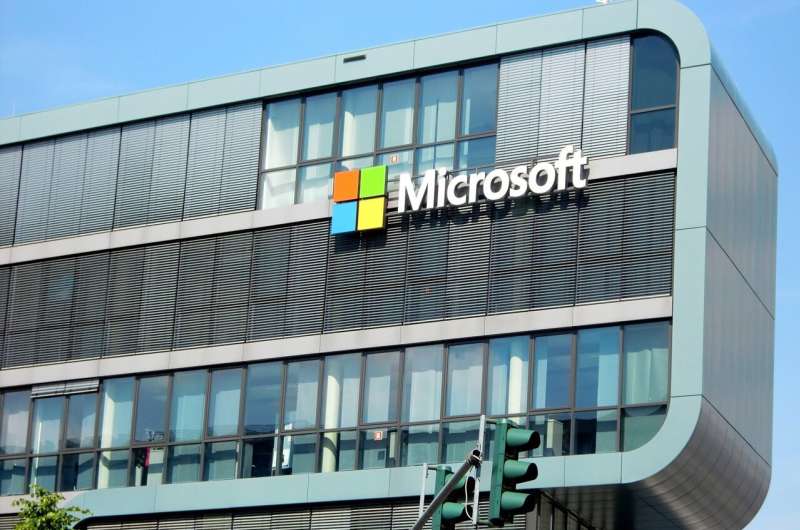For Amazon, Microsoft and other Seattle tech firms, it's AI and anxiety

News Summary
Amazon and Microsoft have collectively cut over 29,000 roles in just over five months, with Microsoft laying off more than 15,000 workers since May and Amazon announcing 14,000 cuts last week. These layoffs are not due to financial distress but rather a strategic shift by tech giants to trim operations, become leaner, and remain flexible enough to keep pace with AI development. Capital allocation is now prioritizing AI infrastructure over employee growth. Since ChatGPT's launch in November 2022, tech companies have poured hundreds of billions into chips, data centers, and new talent, with investments accelerating even after record spending in 2025. While AI isn't yet replacing most employees, companies like Microsoft and Amazon aim for flatter leadership structures and less bureaucracy. Amazon CEO Andy Jassy stated that layoffs are not financially or directly AI-driven, but rather about radically rethinking company structure to be a “lean, flat, fast” global startup. Wall Street's sentiment towards AI spending is mixed. Microsoft's record $34.9 billion in capital expenditures for AI infrastructure worried investors, signaling concerns about return on investment. In contrast, Amazon's cloud division sales outperformed expectations, leading to a share price surge, suggesting the market favors tangible revenue growth from AI-enhanced services. Microsoft's close ties with OpenAI give it a head start in AI tools, while Amazon Web Services is perceived to be in the earlier stages of the AI race. Venture capitalists note that startups founded post-ChatGPT hire fewer people, relying on senior talent and AI tools for coding, leading to faster revenue growth. Older tech giants, structured like pre-GPT companies, face challenges in dismantling outdated technical and hiring models and streamlining vast bureaucracies.
Background
Since OpenAI launched ChatGPT in November 2022, the global technology sector has entered a new era driven by generative artificial intelligence. This technological breakthrough has triggered an unprecedented investment boom and strategic reshaping, prompting tech giants like Amazon and Microsoft to re-evaluate their operating models, capital expenditures, and talent strategies. In response to this “AI-first” paradigm shift, these companies are undergoing significant layoffs, aiming to enhance their AI competitiveness by streamlining organizational structures, reducing bureaucracy, and increasing investment in AI infrastructure. This shift is impacting not only large corporations but also reshaping the business models and hiring strategies of emerging startups.
In-Depth AI Insights
Does the "lean and flexible" strategy of tech giants in the AI era imply more concentrated capital expenditure and higher barriers to entry? Yes, this "lean" approach is strategic, not merely cost-cutting. It signifies: - Increased Capital Intensity: Layoffs are not about reducing overall spending but reallocating resources from human capital to core AI infrastructure (chips, data centers). This suggests sustained high capital expenditures for tech giants in the long term, potentially leading to greater industry consolidation as only well-capitalized players can afford massive AI investments. - Optimized Talent Structure: Companies will favor fewer but more senior "player-coach" type individuals who can leverage AI tools, rather than a large number of junior or mid-level programmers. This could lead to a polarization in the tech talent market, posing challenges for traditional coding roles. - Deepening Competitive Moats: This strategy aims to build and deepen competitive advantages through rapid iteration of AI products and services. Companies failing to adapt effectively risk obsolescence, exacerbating a "winner-take-all" dynamic within the industry. How does the divergence in investor reaction to Microsoft's high AI CapEx versus Amazon's strong cloud performance reveal a shift in market expectations for AI investment returns? This contrast reflects a maturation of market sentiment towards AI investment, moving from an early "vision-driven" phase to a "returns-driven" one: - Microsoft: Its massive CapEx (e.g., $34.9 billion quarterly spending) is seen as aggressive investment without fully proven return models, raising concerns about short-term earnings dilution. This indicates the market is questioning when this infrastructure, despite OpenAI's lead, will translate into significant and sustainable profits. - Amazon: Its robust cloud services (AWS) performance, however, is perceived as evidence of actual business growth driven by AI. Investors are more favorable towards Amazon's ability to convert AI capabilities into visible revenue for existing businesses, suggesting the market's AI evaluation is shifting from pure R&D investment to a focus on commercialization and profitability. - Market Maturity: This disparity suggests that as AI becomes more pervasive, investor tolerance for "burn-rate" on infrastructure is decreasing, with a preference for companies demonstrating faster revenue growth and profit enhancement through AI. What are the true strategic challenges and potential impacts for traditional tech giants in transforming to "shed bureaucracy" and "act like a startup" in the AI age? This is far more than rhetoric; it involves deep cultural and organizational change: - Strategic Challenges: The biggest challenge lies in breaking down entrenched corporate cultures and vested interest structures. Large organizational inertia, internal politics, and path dependency on existing successful models make rapid decision-making and experimentation extremely difficult. Furthermore, effectively integrating AI into complex existing product lines, rather than simply "bolting it on," is a significant hurdle. - Potential Impacts: Successful transformation would reinvigorate these giants, enhancing their innovation capabilities and market responsiveness, thereby solidifying their leadership in the AI era. However, failure to transform could lead to market share erosion, talent drain, and even being outmaneuvered by more agile competitors. This will be a long and arduous process, and its outcome will determine the global tech landscape for the next decade.